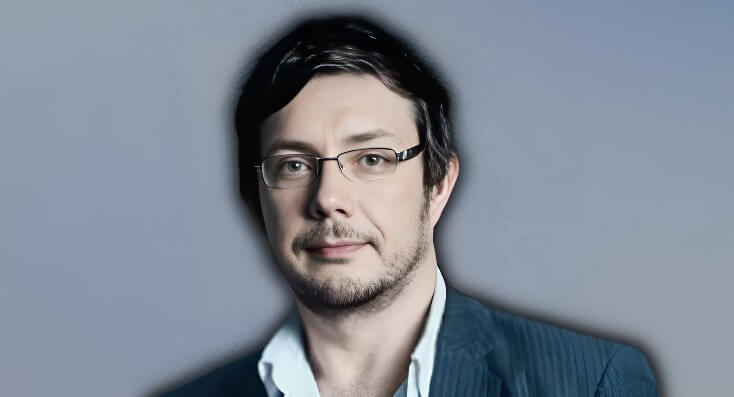Jeff Forshaw: Visionary Physicist, Author and Science Communicator

Jeff Forshaw is a remarkable figure in contemporary science, blending rigorous academic research with public engagement in physics. Best known for his work in particle physics and quantum chromodynamics, he has become an influential voice in bridging the divide between complex theoretical concepts and the curious general reader.
Early Life and Academic Formation
Jeff Forshaw was born in the United Kingdom and developed an early fascination with how the universe operates. His passion for physics led him to pursue higher education at top institutions. He completed his undergraduate studies at the University of Oxford, earning a strong foundation in mathematics and physics. Later, he obtained a doctoral degree in theoretical particle physics at the University of Manchester, where he would build a lasting association.
During his early postdoctoral period, Forshaw worked at the Rutherford Appleton Laboratory, collaborating with leading physicists and refining his understanding of quantum field theory and particle interactions. This era was crucial in shaping not only his technical expertise but also his appreciation for rigorous scientific discourse and clarity of exposition.
Academic Career and Research Focus
Jeff Forshaw is a Professor of Particle Physics at the University of Manchester, where he has taught and led research since the mid-2000s. His work lies at the intersection of phenomenology (applying theory to experimental results) and high-energy collisions, with particular expertise in quantum chromodynamics (QCD) — the theory describing the strong force, which binds quarks and gluons inside protons and neutrons.
Deep Dive into QCD and Small-x Physics
A central theme in Forshaw’s research is the interplay between QCD and the so-called “small-x” regime. In high-energy collisions, when a particle probes very low momentum fractions (denoted by x), interesting quantum coherence effects emerge. Forshaw has examined how jets form and evolve in deep inelastic scattering, and how coherence among emitted particles influences observed distributions. He has also contributed to our understanding of Pomeron exchange, a concept which models how certain interactions occur without altering quantum numbers — useful in diffractive scattering.
His early work “QCD coherence and jet rates in small-x DIS” showcased how theoretical predictions could match experimental data more faithfully when coherence effects were included. Over time, he extended that research to more complex observables, refining predictions for collider physics experiments.
Broadening to Holography, Gluon Saturation, and Beyond
More recently, Forshaw’s interests have expanded to include holographic methods — connections between quantum field theories and higher-dimensional gravitational models — to gain fresh insight into QCD behaviour under extreme conditions. He has also studied gluon saturation, an effect expected when gluon densities become so large that nonlinear recombination effects become significant. His work often weighs the interplay between rigorous calculation and approximate models that capture emergent phenomena.
Across his career, Forshaw has co-authored or contributed to over a hundred research papers. He is also coauthor (with D. A. Ross) of the advanced reference Quantum Chromodynamics and the Pomeron, a textbook that delves into advanced topics in QCD and diffractive theory.
Books and Popular Science Writing
While his academic work anchors his reputation among physicists, jeff forshaw is a name made familiar to the general public through his books and outreach. He has a rare talent for making difficult ideas accessible without diluting their depth.
Why Does E = mc²? (with Brian Cox)
One of his best-known collaborations is with Professor Brian Cox. Together they co-wrote Why Does E = mc²?, a book that unpacks Einstein’s iconic equation in everyday language. They strive to illuminate not just the algebra, but the conceptual underpinnings of mass–energy equivalence — showing why the formula matters and how it emerges from relativity and field theory.
The Quantum Universe and Universal
Forshaw is also coauthor of The Quantum Universe (sometimes titled The Quantum Universe: Everything That Can Happen Does Happen). This book introduces quantum mechanics, uncertainty, superposition, and wave–particle duality in a conversational style. Its companion, Universal: A Guide to the Cosmos, widens the scope to cosmology and the structure of the universe. Through metaphors, analogies, and lucid explanations, Forshaw helps readers approach foundational questions without resorting to oversimplification.
Black Holes: The Key to Understanding the Universe
More recently, Forshaw co-wrote Black Holes: The Key to Understanding the Universe, which explores not only the physics of black holes but their role in testing general relativity, quantum gravity puzzles, and how our view of spacetime may evolve. The tone straddles scientific rigour and public fascination, delivering both narrative and insight.
Approach to Science Communication
What sets jeff forshaw apart is not merely what he communicates but how. He champions clarity, metaphor, and narrative as tools to guide nonexperts through abstractions like quantum fields and curvature of spacetime. He avoids jargon when possible — or, when unavoidable, introduces terms gently with intuition behind them.
Forshaw’s style reflects several principles:
- Start from what readers know — anchoring new ideas in everyday concepts.
- Use multiple metaphors to show different facets of a concept (e.g. waves, particles, solar system analogies).
- Layer the complexity — beginning with a broad picture before peeling back to details.
- Acknowledge limitations — being honest where analogies break down, or where unsolved problems remain.
- Inspire curiosity — raising questions and showing that science is a living endeavour, not a finished story.
By blending narrative, mathematical insight, and humility, Forshaw connects with a broad audience without alienating either lay readers or scientists.
Recognition, Awards, and Impact
Jeff Forshaw’s contributions have earned him notable awards and respect in the scientific community. Early in his career, he received the Institute of Physics Maxwell Medal and Prize, recognising his outstanding contributions in theoretical physics. Later, he was honoured with the Kelvin Prize for public engagement, acknowledging his prowess in bringing physics to general audiences.
Beyond formal accolades, his impact is evident in how often he is cited by other researchers and how his books are used in university-level outreach courses. Students and emerging physicists often refer to his writings when seeking intuitive grounding in QCD or black hole physics.
At the University of Manchester, he supervises doctoral students and leads seminars, nurturing the next generation of theoretical physicists. His work helps inform and refine predictions for large collider experiments (such as at the Large Hadron Collider), aiding in their interpretation of high-energy scattering data.
Challenges, Debates, and Open Problems
No scientific journey is free of obstacles, and Forshaw’s path is no exception.
Matching Theory to Experiment
One perennial challenge in high-energy physics is closing the gap between theoretical approximations and the messy reality of experiments. Perturbative QCD methods work well when the coupling is weak, but in many regimes (especially at low momentum transfer) nonperturbative effects dominate. Forshaw often works in “boundary zones” where neither naive approximation fully applies, requiring careful resummation, matching procedures, or hybrid analytic–numerical methods.
Handling Saturation and Nonlinear Effects
The study of gluon saturation — when gluon densities become extremely large — is an especially thorny area. Modeling the transition from linear to nonlinear behaviour in a way that matches experimental signatures is a deep theoretical challenge. Forshaw’s work in this area must carefully negotiate between tractable models and predictive realism.
Quantum Gravity and the Frontier
As a communicator and theorist, Forshaw sometimes steps near the frontier of quantum gravity, black holes, and spacetime structure. While these are exciting directions, they also carry more speculative assumptions and unresolved puzzles. Crafting public narratives that convey both excitement and uncertainty without overstatement is a delicate task.
Why “jeff forshaw” Matters Today
In an era when science communication is more important than ever, jeff forshaw stands out as a model of balance. He blends:
- Technical mastery, so that his popular accounts are rooted in real science, not oversimplification.
- Clarity and accessibility, so that wide audiences can follow without feeling overwhelmed.
- Intellectual honesty, acknowledging edges of understanding and open questions.
- Relevance, by tackling subjects — quantum, cosmology, black holes — that provoke wonder.
For readers, his books and lectures offer a path into advanced physics without losing sight of intuition. For students and researchers, his publications and mentoring contribute meaningfully to scientific progress. And for public discourse, he helps inspire a clearer view of how we understand the universe — its constituents, forces, and potential mysteries.
Advice from Forshaw’s Example
To those inspired by him or seeking to follow a similar path, there are lessons in how jeff forshaw operates:
- Learn to communicate: mastering a topic is not enough; teaching it well is equally valuable.
- Be rigorous but flexible: know your foundations, yet be open to novel methods and analogies.
- Write for real people: aim to spark curiosity rather than hide behind technicality.
- Stay curious on the frontier: don’t fear the open problems or areas of uncertainty.
- Bridge communities: scientists, students, and the public all have roles in the scientific endeavour.
Conclusion
Jeff Forshaw is more than a theoretical physicist; he is a bridge-builder — between deep science and the curious mind. His work in quantum chromodynamics and small-x physics advances the frontier of particle physics. His books and talks translate abstract ideas into compelling stories. And his method of combining insight, humility, and clarity sets a high standard for all who wish to bring serious science into public view.



